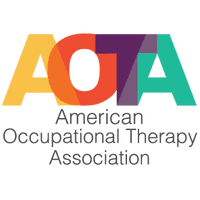The ADHD Support Duo: Why Sleep and Exercise Are Game-Changers for Kids with ADHD

As parents of children with Attention Deficit Hyperactivity Disorder (ADHD), you're likely familiar with the daily challenges that come with inattention, hyperactivity, and emotional dysregulation. While medication and therapy are common tools, did you know that two simple but powerful factors—sleep and exercise—can dramatically improve your child’s ability to regulate, focus, and thrive?
In this article, we’ll explore why sleep and physical activity are essential for managing ADHD symptoms and provide real-world tips to help you make these pillars of wellness part of your family’s daily routine.
💤 The Importance of Sleep for Children with ADHD
Quality sleep is the foundation for physical health, emotional stability, and cognitive performance. But for kids with ADHD—whose executive functioning and emotional regulation are already under strain—sleep is even more critical.
Why Sleep Matters:
Improved Focus and Attention:
Sleep directly supports brain function, including memory and attention span. Without adequate rest, kids with ADHD are more distractible and struggle to stay on task.Emotional Regulation:
A well-rested brain can better manage emotions. When sleep-deprived, children are more likely to have meltdowns, mood swings, and difficulty handling stress.Behavioral Control:
Hyperactivity and impulsivity increase with sleep loss. Kids who sleep poorly often display more disruptive behaviors and reduced self-control.
Tips to Promote Healthy Sleep:
Establish a consistent bedtime routine—consider calming activities like reading, gentle stretching, or soft music.
Create a sleep-friendly environment: dim lights, cozy bedding, and no screens an hour before bed.
Keep a consistent sleep schedule—even on weekends—to help regulate your child’s internal clock.
Encourage daytime exercise (more on this below)—it improves nighttime rest.
🏃♂️ Why Regular Exercise Supports Kids with ADHD
Exercise isn’t just good for physical health—it’s brain food, too. Research shows that physical activity enhances cognitive performance, reduces stress, and improves mood in children with ADHD.
How Exercise Helps:
Boosts Cognitive Function:
Physical activity improves attention span, memory, and impulse control. It activates the same brain chemicals that many ADHD medications target—like dopamine and norepinephrine.Reduces Stress and Anxiety:
Exercise acts as a natural mood stabilizer. It can lower agitation, reduce emotional outbursts, and provide a healthy outlet for restlessness.Improves Sleep Quality:
Movement during the day supports deeper, more restful sleep at night—completing the positive feedback loop between exercise and sleep.
Tips to Build in More Movement:
Encourage outdoor play like biking, tag, or playing at the park.
Add movement breaks during homework or screen time—try jumping jacks, animal walks, or stretching.
Get moving together: family dance parties, hikes, or obstacle courses are great ways to bond while being active.
Consider structured activities: sports, martial arts, swimming, or dance can offer both physical and social benefits.
🧠 The Bottom Line: Sleep + Movement = Better Regulation
ADHD is a neurodevelopmental condition that affects the brain’s ability to regulate attention, behavior, and emotions. While therapy and medication can be powerful tools, sleep and exercise are essential components that support overall regulation and resilience.
By prioritizing these two lifestyle elements, you’re not just managing symptoms—you’re setting your child up for long-term success and well-being.
💡 Want to Learn More?
At Kinspire, we help families make everyday changes that lead to real results. Our licensed occupational therapists provide daily support to help you implement routines, troubleshoot challenges, and build habits that work in real life.
👉 Complete our Family Discovery Form to book a free consultation with a licensed occupational therapist. You’ll be matched within 24 hours and can start getting support right away.
Let’s help your child thrive—one good night’s sleep and one movement break at a time




